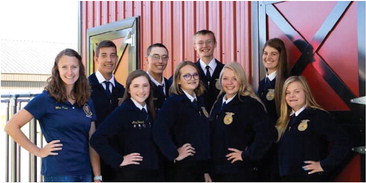FFA has a proud history of serving agriculture


In 1928, 33 students from 18 states gathered in Kansas City, Mo., to form the Future Farmers of America.
The roots of FFA originate from a time when boys we...


In 1928, 33 students from 18 states gathered in Kansas City, Mo., to form the Future Farmers of America.
The roots of FFA originate from a time when boys we...